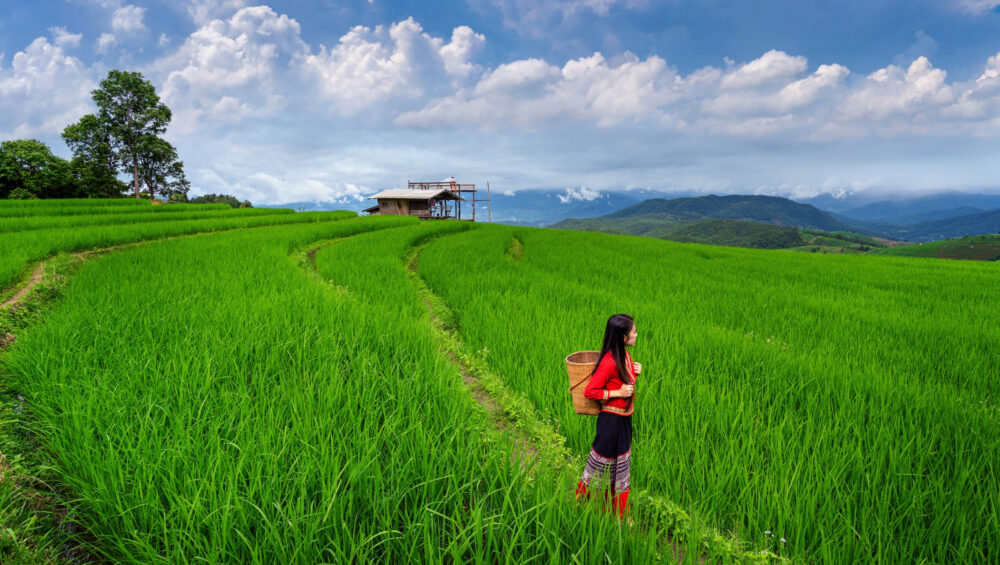Green tourism is rapidly becoming a strong development trend in Vietnam. An increasing number of tourists are interested in experiencing nature and local culture while contributing to environmental protection. No longer just ordinary sightseeing trips, tourism now aims for responsibility towards nature and the community.
Vietnam – An Attractive Destination for Green Tourism From nature reserves to traditional craft villages, Vietnam possesses countless destinations suitable for sustainable tourism. Visitors can participate in activities such as: planting forests, planting rice, cleaning beaches, or staying in homestays in ecological villages to learn more about local culture. Choosing green tourism allows you not only to enjoy the beauty of nature but also to directly contribute to environmental protection and the development of local communities.
Why is Green Tourism Important? The current tourism trend is gradually shifting from mere consumption to responsible experiences. Green tourism is the answer to this need, offering an environmentally and socially friendly approach.
- Green tourism: A type of tourism that minimizes negative impacts on the environment and respects local cultural values.
- Sustainable tourism: More comprehensive, focusing on the balance between economic development, environmental protection, and social benefits.
- In contrast, traditional tourism causes many negative consequences such as: widespread waste, water pollution, destruction of ecosystems, and the consumption of large amounts of fossil fuels.
Benefits for the Community Green tourism helps local people have more job opportunities, sustainably increasing their income. At the same time, cultural identity is preserved, and awareness of protecting natural resources within the community is enhanced. People also have the opportunity to be trained as ecotourism guides or employees in the tourism industry.
The Development Status of Green Tourism in Vietnam In recent years, Vietnam has made significant progress in developing green tourism. The government’s tourism strategy to 2030 emphasizes the importance of environmental protection. Many ecotourism projects, community-based tourism initiatives, and international cooperation programs have been implemented across the country.
- The “Green Lotus” certification is applied to encourage accommodation facilities to operate in an environmentally friendly manner.
- Many craft villages and communities have combined tourism with cultural preservation.
- International cooperation programs bring experience and technology to improve the quality of green tourism.
Notable Green Tourism Destinations
- National Parks: Cuc Phuong, Bach Ma, Cat Tien are places that conserve rare flora and fauna. Visitors can participate in forest trekking tours, bird watching, and learn about ecology.
- Traditional Craft Villages: Bat Trang (ceramics), Van Phuc (silk), Dong Ho (woodblock prints) are applying environmentally friendly production models.
- Local Communities: Mai Chau, Sapa, Ban Lac are nổi bật with homestay models. Visitors can participate in activities such as farming, cooking, weaving, etc.
- Islands and Beaches: Cu Lao Cham, Con Dao, Phu Quoc are promoting the conservation of coral reefs and marine animals. Responsible diving tours and ecological education activities are being emphasized.
- Lan Ha Bay: nổi bật with marine ecotours, exploring coral reefs and admiring the sunset.
Experience Pristine Nature
- Ta Nang – Phan Dung: A famous trekking route with majestic landscapes, hills, streams, and camping amidst nature.
- Can Gio: A mangrove forest area near Saigon, ideal for kayaking, bird watching, and learning about the unique ecosystem.
- Nam Cat Tien: One of the best places to observe wildlife. You can see elephants, deer, and rare birds in their natural habitat.
- Phong Nha – Ke Bang: Explore the magnificent cave system combined with ecological activities.
- Ta Dung: Experience camping in the peaceful setting of “Ha Long Bay on land.”
Tourism Activities Linked to Environmental Protection
- Planting trees to restore forests in Cuc Phuong
- Scuba diving to see coral reefs and collect trash in Phu Quoc
- Cycling to explore craft villages in the Mekong Delta
- Volunteering for environmental protection in the northern mountains
How to Choose Reputable Green Tourism Operators To choose a reliable tour operator, consider the following factors:
- Has sustainable certifications such as Travelife, Green Lotus, Green Globe.
- Publicly discloses environmental and social policies and fair profit distribution.
- Prioritizes the use of local resources and commits to environmental protection.
- Has good reviews from tourists and transparent community activities.
Some reputable operators in Vietnam:
- Center for Community Cultural Conservation
- Song Hong Tourist Company
- Green Environment Company
Frequently Asked Questions (FAQ)
How to know if a tourism operator is reputable? → Based on certifications, customer reviews, environmental policies, financial transparency, and the use of local resources.
How are green tourism and sustainable tourism different? → Green tourism focuses on the environment and culture. Sustainable tourism includes long-term social and economic factors.
Why choose green tourism? → Because it helps reduce pollution, protect nature, and bring practical benefits to local communities.
How is green tourism developing in Vietnam? → With many supportive policies, environmental certifications, and new ecotours, green tourism is developing strongly.
Which places are ideal for green tourism? → Including national parks, traditional craft villages, and mountainous and island regions such as Cuc Phuong, Bach Ma, Bat Trang, Mai Chau, Con Dao.
What are some worthwhile natural experiences? → Forest trekking, kayaking, camping, and scuba diving to see coral reefs are all great experiences.




